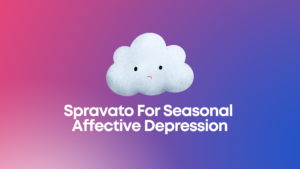The Connection Between The Insular Cortex and Cravings: Craving is defined by the American Society of Addiction Medicine as “Addiction is a primary, chronic disease of brain reward, motivation, memory and related circuitry. Dysfunction in these circuits leads to characteristic biological, psychological, social and spiritual manifestations. This is reflected in an individual pathologically pursuing reward and/or relief by substance use and other behaviors.” (1) This can be an extremely dangerous symptom, which leads to many people relapsing time after time even when they have gone through treatment before.
There are many different factors that can contribute to cravings, and scientists are still working to understand all of them. However, one area that is currently being studied intensively is the connection between the insular cortex and cravings. The insular cortex is a part of the brain that is responsible for processing sensations from the body, including taste, pain, and internal sensations like blood pressure. (2) It is also linked to impulsivity and emotions.(3)
A research team led by Dr. Jelena Radulovic of Northwestern University recently published an article in the Proceedings of the National Academy of Sciences that explains their findings with regard to how cravings change brain activity in the insular cortex. (2)
The researchers looked at mice that had been conditioned to associate either saccharine, maltodextrin, or cocaine with an environment. They then randomly administered one of these substances in order to observe how each would affect brain activity. What they found was fascinating: when the drugs were given, there was increased activity in the insula. The more activity, the stronger the cravings were, but only if it was to the associated drug. These findings indicate two important things: firstly, that strong cravings are strongly linked to both dopamine and glutamate, which are neurotransmitters responsible for neural signaling in the brain. Secondly, that this all occurs in the insular cortex.
This research is important because it provides scientists with a greater understanding of how cravings work and how they can be best treated. Currently, one treatment option that is being explored is using TMS (transcranial magnetic stimulation) to target the insular cortex and reduce cravings. A study published in Translational Psychiatry found that using TMS on the insular cortex reduced cravings by increasing activity in areas of the brain responsible for inhibiting impulses. (3)
While it is still early days, this research has important implications for people who are unable to control their cravings, and may provide a major step forward in treatment options. At PsyFi TMS, we provide TMS treatments for a wide variety of conditions, including treatment-resistant cravings. If you have been affected by excessive cravings and are looking for a way to get your life back, please check out our website at www.psyfitms.com or contact us today at info@psyfitms.com
1. https://www.asam.org/about-addiction/definition-addiction
2. Radulovic, J., et al. (2011). “Cravings activate brain regions associated with drug addiction.” Proceedings of the National Academy of Sciences 108(50): 20254-9.
3. Kish, S. J., et al. (2012). “Reducing cocaine craving using repetitive transcranial magnetic stimulation.” Translational Psychiatry 2: e79.


Have you thought about adding some videos to the article? I think it might enhance viewers understanding. http://www.xmc.pl